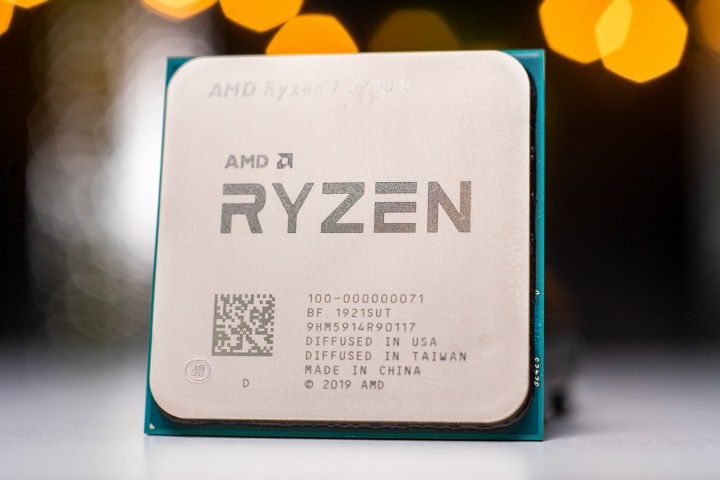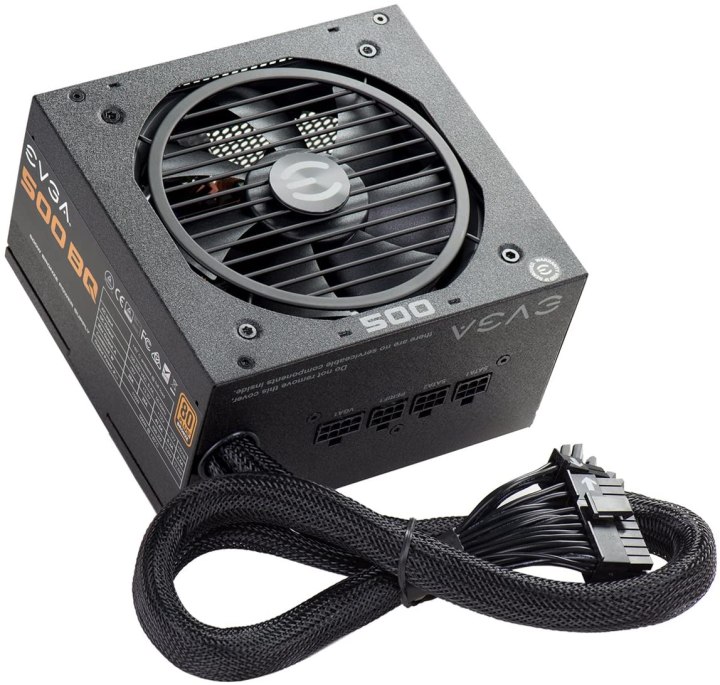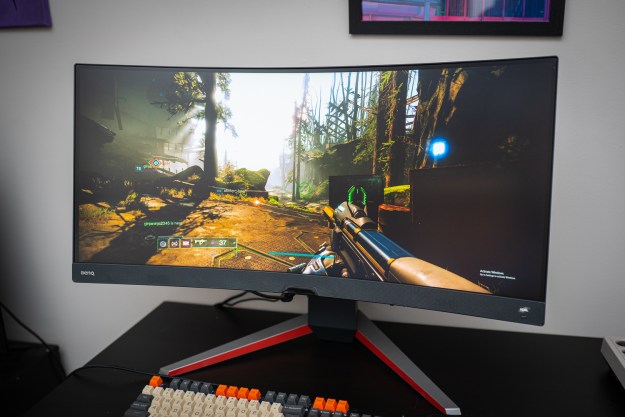4K video editing is a demanding task, but you don’t need to take out a loan to build a PC that can edit 4K video. With our best 4K video editing PC under $1,000, you can save some money while keeping your timeline smooth.
Want a PC for editing but don’t quite have the budget? Here’s a great build you can put together for just $500. If you want a PC that’s aimed more at gaming in 4K, we have a guide for that as well.
What can this build do?
Since this is a PC designed for editing 4K footage, there were several key considerations we had to make. The first was a powerful, multicore processor, followed by plenty of memory and high-speed storage. We also wanted to make sure the system had a decent graphics card with plenty of VRAM for performing rendering and handling any 3D effects work you want to do.
We had to make some sacrifices to stay under budget, but we feel happy that this is a very capable PC for 4K video editing.
| Product | Price | |
| CPU | AMD Ryzen 9 3900X | $420 |
| Motherboard | MSI B550M-A Pro | $85 |
| RAM | Corsair Vengeance LPX 16GB 3,200MHz | $88 |
| Graphics card | MSI GeForce GTX 1050 Ti 4GB | $309 |
| Storage | Western Digital Blue SN550 1TB, Seagate Barracuda 2TB HDD | $105 + $55 |
| Case | Cooler Master MasterBox QL300 |
$47 |
| Power supply | EVGA BQ 500W 80+ Bronze | $35 |
| Total | $1,144 |
We’re a little over budget, but that’s par for the course in 2021. A build like this needs a dedicated graphics card, and thanks to the ongoing GPU shortage, the price of cards is very high at the moment. The GTX 1050 Ti we chose is overpriced, but it’s far more reasonable than many of the alternatives. If you can bite the bullet now, you’ll easily be able to slot in a new
Note: All the components are purchasable from Amazon, were found on the site as part of our research, and were priced accurately when this guide was put together. We always suggest checking each part’s price before you commit to buying, as they do change regularly. Unfortunately, they also quickly sell out, especially when we’ve recommended them. If an item isn’t for sale, shop around — you might find it at your favorite online store.
CPU: AMD Ryzen 9 3900X

At the heart of this 4K video editing build is the AMD Ryzen 9 3900X. Why not the more recent 5900X? Well, we wanted to stay under budget (or as close to it as we could). With a recent price drop, you can save big on the last-generation 3900X. It’s the same price as the Ryzen 7 5800X at the moment, and the 3900X should perform better in video editing tasks.
That’s because it has more cores. The 3900X offers 12 cores and 24 threads, while the more recent 5800X comes with eight cores and 16 threads. It’s true that the more recent cores are faster, but video editing applications prefer more cores over faster ones. Plus, the 3900X includes a CPU cooler while the 5800X doesn’t, saving us about $50.
If you have an extra $200 to spare, the Ryzen 9 5900X is the best option. However, you’re not giving up much if you can’t swing the extra cost. Our motherboard choice supports the more recent processors, so you can slot in a 5900X or 5950X down the line without upgrading your entire rig.
Motherboard: MSI B550M-A Pro

We chose AMD’s midrange chipset for the motherboard, which still supports overclocking and many of the features of the flagship X570 chipset. The motherboard price is a big reason we went with AMD for this build. AMD not only supports overclocking on its midrange chipset, but the cost of motherboards is usually cheaper compared to Intel counterparts. A similar Intel board would drive closer to $160.
The MSI board we chose comes with solid connectivity, including four USB 3.2 ports on the back and Gigabit Ethernet. It also comes with a USB 3 header on the board so you can attach fast external storage through the case’s front panel. Unfortunately, the board lacks USB-C, so it may be worth upgrading to something like the ASRock X570M Pro4 if you can afford an extra $100 or adding in a PCIexpress USB-C card.
Memory: Corsair Vengeance LPX 16GB 3,200MHz

Video editing benefits from a large amount of high-speed RAM. However, our budget has limited us to 16GB of memory. If you have the cash, do please buy at least 16GB of DDR4-3200MHz, but preferably make the stretch to 32GB or even 64GB. The Corsair Vengeance LPX 32GB is affordable and plenty fast to support our Ryzen 3900X. If you can afford faster memory, the CPU will benefit all the way up to 3,600MHz, but 3,200MHz is fast enough for now.
Graphics card: MSI GeForce GTX 1050 Ti

It’s very important to have a dedicated graphics card when editing 4K video. Integrated graphics chips struggle to play back
It’s very overpriced at the moment, given the ongoing GPU shortage. It’s important to note that we chose the GTX 1050 Ti not because it’s a great card for video editing but because it’s an in-stock card at a relatively reasonable price. If you have a local Micro Center, it’s worth checking to see what’s available in store. The CUDA cores inside Nvidia graphics cards are better for video editing, but AMD cards are usually cheaper. Unfortunately, it’s going to come down to what you can find in stock.
Storage: Western Digital Blue SN550 1TB, Seagate Barracuda 2TB HDD

4K video files are large, so we needed to factor in a lot of storage space when putting this build together. Between the two drives we chose, you’ll have access to 3TB of storage, which should be plenty to get you started with
The Western Digital Blue SN550 1TB drive is great for storing your operating system and video editing applications. This M.2 solid-state drive gives you a good amount of storage for video files you’re working on, which should help speed up your video editing process. Down the line, we recommend adding another SSD to edit off of or to use as a cache drive.
The Seagate Barracuda 2TB hard drive is for archival purposes. It’s slow, but it’s cheap and comes with a lot of storage space. You can use the drive to store video files you’re not working on as well as any other media files you don’t want taking up space on your SSD.
Case: Cooler Master MasterBox Q300L

In the case of a PC designed for editing videos, you don’t have to spend an arm and a leg on fancy protections or a temperature control system. However, your hardware will need an ample container for safe, compact storage. That’s why the affordable, versatile Cooler Master MasterBox Q300L is such a good fit for our build. Its patterned magnetic dust filters on the front and top panels look stylish and are easy to clean. The Micro-ATX design makes it compact, but with ample space to fit all the components that we’ve selected here. The box is also very well ventilated to prevent your hardware from overheating.
PSU: EVGA BQ 500W 80+ Bronze

For a power supply, we chose an EVGA BQ 500W 80+ Bronze unit. It’s a semi-modular PSU, so you only need to plug in the cables that you need, and it comes with enough power to feed the system. This isn’t enough power for an RTX 3080 if you plan on upgrading the GPU down the line, but it’s cheap. Consider spending a little more for a 750W if you want a new GPU in the future.
Editors' Recommendations
- The 6 best gaming PCs under $1,000 in 2024
- The 5 best ultrawide monitors for gaming and work in 2024
- The best laptops under $1,000, tested and selected by experts
- The best PC builds: budget, gaming, video editing, and more
- The best 4K laptops for 2023





